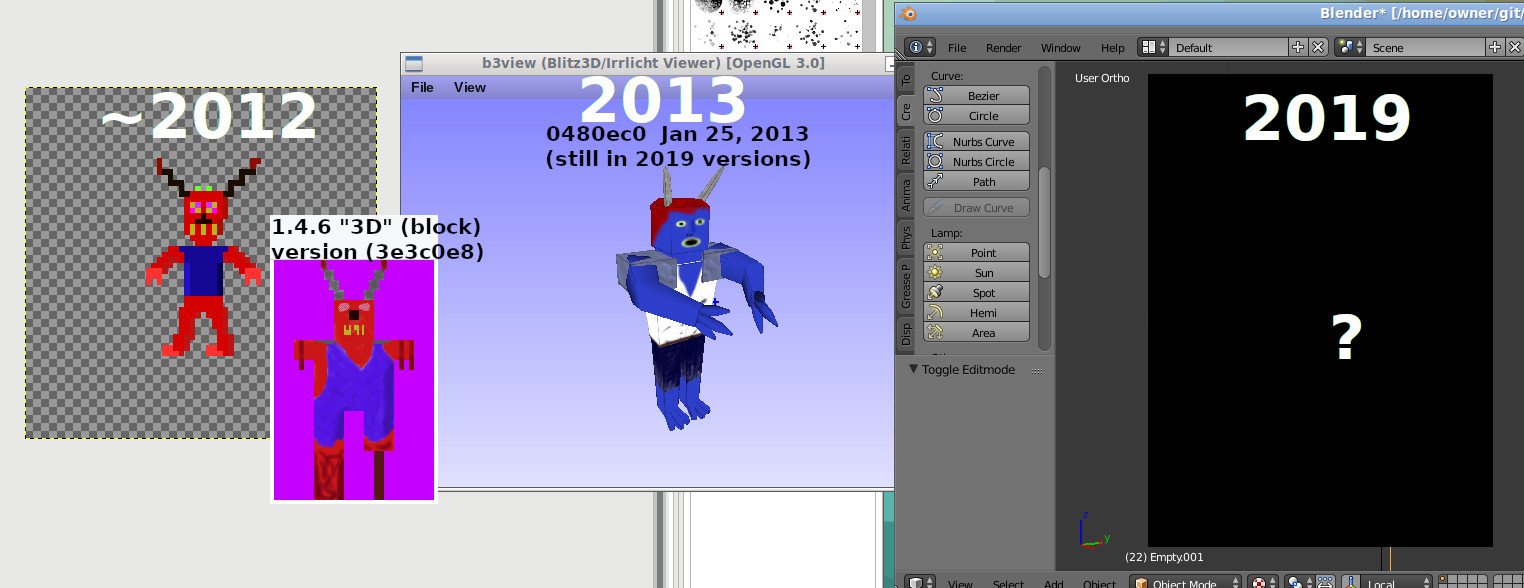“Programmer Art” is art inserted by a programmer who is not necessarily an artist, or at least not a trained artist. This is expected in indie games and open source games, which often leads to less adoption. The creator and open source fans will often latch onto the product and like it because it is a contribution to a cause (free of charge, open source, or public licensed) even if they only play it briefly and it doesn’t have much replay value. Not many people will adopt the game because the quality is only appealing to people with a bias in the product’s favor. Pixel art is a highly developed style, but has a low barrier to entry. Programmers not skilled in art often make acceptable and charming graphics for retro-style computer games. Many successful indie games use pixel art (or block-based models in the case of 3D, where textures are often pixel art). In games with funding, “Programmer Art” is usually used as a stopgap measure (a temporary measure to fill gaps), but when it makes it into a final game, critics often use the term “Programmer Art” as an insult.
I am a programmer who is also an artist. I collect movies on early Microsoft and Apple, including documentaries and docudramas. According to many of those movies, Steve Jobs pushed people to make their code and engineering designs into artwork and hired programmers who were also artists or poets. Having people with multiple perspectives and backgrounds, including in other fields, can boost a project’s quality and apparent (and actual) depth of design. Integrating one’s unique abilities, personality, and knowledge of other fields takes confidence, and sometimes internal or external inspiration.
Depth of design is an intangible but apparent aspect of a project where a user can sense that the product is highly developed and contains elements from culture. For example, Apple used proportional fonts from having a knowledge of fine literature and printing techniques, and Microsoft and other companies copied the idea.
I am helping OldCoder and the others of the minetest.org team improve many aspects of Minetest including integration between mods, balancing, and code, but improved artwork has been my main contribution. Though we are programmers, OldCoder and I also have some sense of what looks bad and what needs to be improved (I haven’t read the license/readme of every mod so I don’t know what other minetest.org team members do art). Most of the artwork in Minetest is highly consistent and of fair to excellent quality, which is unusual for an open source game. I credit this to the large modding community, and low barrier to entry for creating acceptable pixel art graphics. Certain contributors almost solely maintain the popular mods (though sometimes developers fall out of the community and someone else becomes the maintainer), but many additional mods are created by people who have only made that mod or a few mods. Also, many people have contributed artwork to popular mods even without contributing code.
Most of the core features of the game (any Minetest “game,” to be clear) are implemented as mods (beyond Minetest, “mods” generally modify existing functionality and/or graphics and adding significant features sometimes possible but is less common). Since Minetest is basically an engine, any “game” that is included is a set of mods (though each “game” is basically a full game). An impressive feature of Minetest is that the “game” is downloaded whenever you join a server, so each server can achieve unique design goals without requiring the player to download anything manually.
I consider myself an artist. I became somewhat skilled at art, poetry, and songwriting before learning how to code. Therefore sometimes I call myself a “programmer artist” intentionally to turn the insult into a positive. I sometimes hyphenate the term as “programmer-artist,” so people don’t get the impression that I’ve missed a comma since the term is made up and it could appear at the end of a list and appear to be two separate things. However, I consider my art and programming to be inseparable–I wouldn’t have as many outlets for creativity if I didn’t program, and I wouldn’t be able to make certain unique contributions to programming without my non-programming skills. Here is a video I made today (just over 7 min) about programmer art, the history of Big Red and sprite characters in Minetest, and my work in progress on a new version:
Minetest Big Red Model and Animation Improvements and Texture Redo @YouTube

This guy is pretty evil, varying from devilish to zombie-like to reptilian. Each version has been a different type or combination of types. Each type can tell its own story, and these versions of Big Red are not consistent with each other. Having evil enemies can be an important part of creating didactic or dramatic encounters or stories, and cultural knowledge behind the type of the enemy is critical in the case of storytelling. Even though Minetest doesn’t have a story (at least not yet…a “game” as described above or multiplayer DM could use Minetest to tell a story, especially with enhancements to permissions in Final Minetest), changing the type of an enemy breaks continuity. Constantly resetting expectations, such as in this case and the case of minetest.net releases which break old mods and worlds, decreases the ability of players to become familiar with or loyal to a game.
